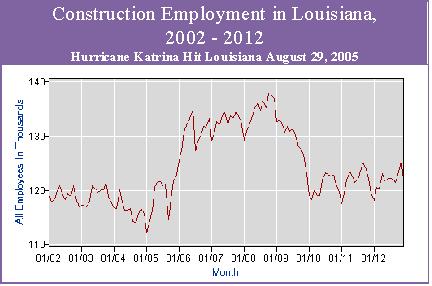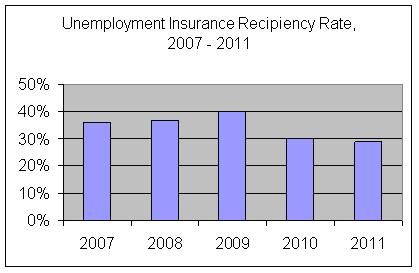SOURCE ITEMS
In addition, because Uber drivers are considered independent contractors, they are not entitled to benefits; their relationship with Uber is merely about their use of the company’s app that connects them to riders. As contractors, they have the flexibility to work when they want and as many hours as they choose, but they also have to cover any costs they incur. After adding up those costs, some drivers say, making a profit is nearly impossible.
Luz Lazo, Some Uber drivers say company’s promise of big pay day doesn’t match reality, Washington Post, September 6.
—————
Some 130 million Americans, for example, now participate in the ownership of co-op businesses and credit unions. More than 13 million Americans have become worker-owners of more than 11,000 employee-owned companies, six million more than belong to private-sector unions.
Gar Alperovitz, Worker-Owners of America, Unite! New York Times, December 14, 201.
—————
With nearly half of all services jobs in the OECD at risk of automation, the sharing economy can smooth the disruption caused to displaced workers as they upgrade their skills. Indeed, sharing-economy data can help governments identify those workers at greatest risk and support their retraining. … Those who are displaced will have far better prospects in the more prosperous and inclusive environment that the sharing economy promises to create.
Ayesha Khanna and Parag Khanna, Disciplining the Sharing Economy, Project Syndicate, September 25, 2014.
—————
Was my house cleaner — the one I’d hired through a company that has raised $40 million in venture-capital funding from well-respected firms like Google Ventures, the one who was about to perform arduous manual labor in my house using potentially hazardous cleaning chemicals — homeless?
He was, as it turned out. And as I told this story to friends in the Bay Area, I heard something even more surprising: Several of their Homejoy cleaners had been homeless, too. … Homejoy doesn’t employ any cleaners — like many of its peer start-ups, it uses an army of contract workers to do its customers’ bidding.
Kevin Roose, Does Silicon Valley Have a Contract-Worker Problem? New York Magazine, September 18, 2014.
—————
According to a Wells Fargo/Gallup survey of small-business owners conducted earlier this year, 56% of small-business owners, up from 45% in 2010, are either extremely or very satisfied with being a small-business owner. But fewer owners, 37%, say they feel extremely or very successful as a small-business owner — the lowest figure in a decade.
Coleen McMurray and Frank Newport, Small-Business Owners Satisfied, but Fewer Feel Successful, Gallup, September 30, 2014.
—————
Eighteen percent of all adults worldwide — or 29% of the global workforce — reported being self-employed in 2013. But rather than a positive sign of proactive entrepreneurial energy, high rates of self-employment can often signal poor economic performance. The self-employed are three times as likely as those who are employed full time for an employer to be living on less than $2 per day.
Ben Ryan, Nearly Three in 10 Workers Worldwide Are Self-Employed, Gallup, August 22, 2014.
—————
Self-employment higher than at any point over past 40 years … Average income from self-employment fallen by 22% since 2008/09
Self-employed workers in the UK – 2014, UK Office for National Statistics, August 20, 2014.
—————
Nearly one in three working Americans is an independent worker. That’s 53 million people – and growing. We’re lawyers and nannies. We’re graphic designers and temps. We’re the future of the economy.
About Us, Freelancers Union. Accessed October 4, 2014.
—————
The puzzle goes beyond earnings. Not only are the median earnings of the self-employed comparatively low, they have similar traits to those of salaried workers. … If the self-employed are a good proxy for “growth-creating innovators,” it is both puzzling that their cognitive abilities and noncognitive traits are similar to those of their salaried counterparts and that they earn less.
Ross Levine and Yona Rubinstein, Does Entrepreneurship Pay? The Michael Bloombergs, the Hot Dog Vendors, and the Returns to Self-Employment, Haas School of Business, University of California, Berkeley, July 2013.
—————
There, and in other countries with less well-developed social security systems and which suffered from large losses in (formal) employment, many previously economically inactive people returned to the labour market, often to take up informal employment in order to make up for the loss of household income.
Global Employment Trends 2014, International Labour Organization.
—————
Already we can see the contours of another economy in the shape of new communitarian movements through which local communities resist and respond to the multiple crises of global capitalism and innovate alternatives to meet economic needs…
Anup Dash, Toward an Epistemological Foundation for Social and Solidarity Economy, Occasional Paper 3, Potential and Limits of Social and Solidarity Economy, United Nations Research Institute for Social Development (UNRISD), March 2014.
COMMENTS
From time to time in the history of the capitalist world economy, its magic has faltered and then been restored. This time the magic will sporadically flicker on for a while here and there in the world economy, but it will not be restored. Conditions for a restoration are disappearing and will not come back.
The undoing of key elements of formal wage employment systems has been increasing the financial and emotional burdens on the world’s working people. The growth of these burdens is pushing the world’s communities of working people into a long-term period of economic uncertainties and crisis.
Around the world, formal (government regulated) wage employment systems are faltering. By necessity, the world’s workers are examining a wide range of possibilities for saving, improving, or changing their work life situations. At the same time, large numbers of organizing entrepreneurs are offering up a large variety of strategies, from coops to unions, to entrepreneurial self-employment, to political activism, to disengagement and resistance.
It is probably true to say that most of the world’s working people do not think of themselves as economic experimenters and do not want to be economic experimenters. In lower income parts of the world where formal wage employment systems have always been more promise than reality, most people probably want a formal wage employment system to become a reality where they are and in their lifetimes.
In the higher income parts of the world, most working people who have lost wages and benefits and job security still believe a return to “normal” scenarios of employment is possible and still look to mainstream economists and policy experts to make that return happen.
The world’s working families may not wish to be the inventors of a new world of work, but they face very limited options: nostalgically clinging to the past as the hope for the future; learning to live with less while psychologically acquiescing to the losses; or, struggling to secure employment and income security through means other than standard wage employment.
The possibility of nostalgically clinging to hope for a return to the past is fast disappearing. Acquiescence and inventiveness are really the only two options available. And in the realm of inventiveness, the paths taken include not only coops and various forms of independent self-employment and franchised self-employment, but also a wide range of criminal activities, including violent grabs for economic resources.
The future of work is not predictable in any specific sense, but we can be fairly certain that the spread of systems of formal wage employment that were created in the U.S. and Europe during the 20th century has come to an end. The belief that the global nation state system will soon produce safe, secure, and well paid (by western standards) jobs for the majority of the world’s workers is no longer plausible.
Other ways for the world’s working people to have safe, secure work at living wages must and are being created.





